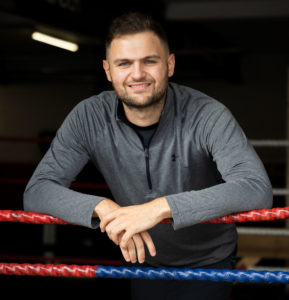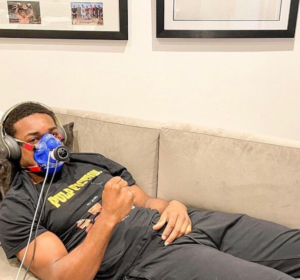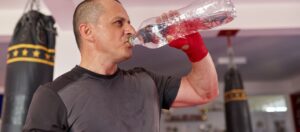For those of you who follow me on the gram you would have more than likely seen me using the PNOE metabolic analyser with fighters that I work with.This magical piece of portable equipment allows me to rock up to boxing or MMA gyms & assess each individual fighter’s unique metabolism & physiology via breath by breath analysis to determine where their strengths & weaknesses lie – pretty cool right!
Data collected from metabolic testing I do can then be used to help inform the implementation of individualised training & nutrition strategies to help fighters improve the size & efficiency of their engine to ensure they perform at their best on fight night. No cookie cutter approaches, it is pretty much as bespoke as you can get when it comes to programming nutrition strategies.
There are a few tests which I can conduct with the PNOE with one of the most useful & important ones being a Resting Metabolic Rate (RMR) Test.
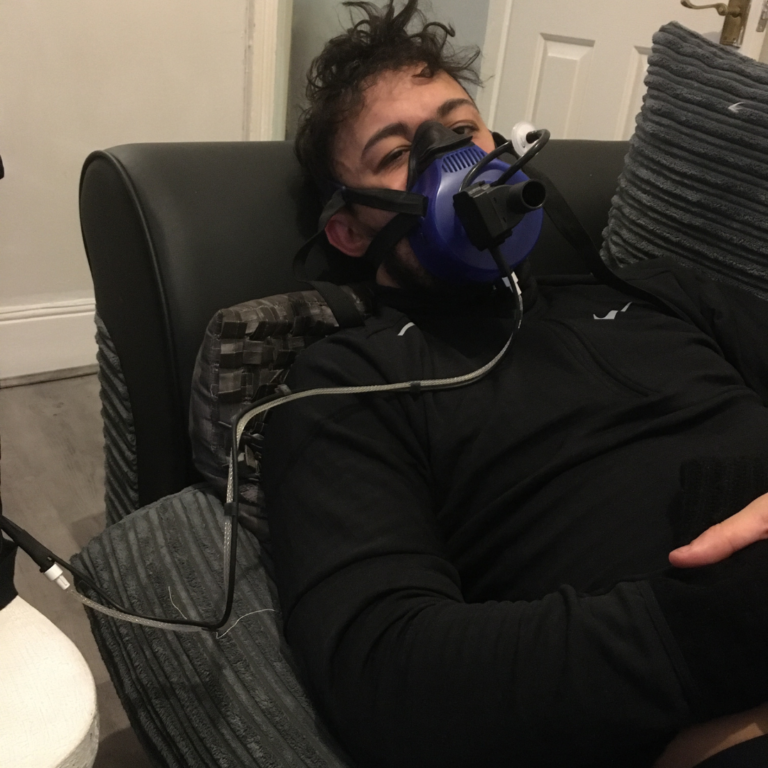
*Professional Boxer Michael McKinson Getting His RMR Measured
What Is An RMR Test & How Does It Work?
Resting Metabolic Rate is the amount of energy your body burns at complete rest to facilitate basic metabolic & physiological functions. I explain this to fighters as – the amount of energy/calories your body will use if you lie in bed completely still all day watching friends on Netflix (or your chosen box set of choice).
There are a handful of equations which you can use to predict RMR. Some of these equations utilise metrics such as fat free mass or height & weight to estimate a reading of RMR, however these equations have been shown to consistently under or over predict RMR in athletic populations.
I have seen this myself in practice with some equations under estimating a fighter’s RMR by 400 calories – the consequence of this is that if a fighter takes this reading as a given, they will be under fuelling each day by 400 calories which over the course of a week is 2800 calories….
This is why it is hugely beneficial to test RMR & not guess it – this is where the PNOE unit gets packed into my fiesta & gets a day out of the house.
An RMR test is the easiest thing a fighter will have to do in their training week.They’ll have to complete the test in a fasted state so we tend to run tests first thing in the morning. After they have fasted all they then need to do is lie at complete rest with a mask & a heart rate monitor on for 15-20 minutes, listen to some relaxing music (big shoutout to Kygo & Tame Impala here) & breath in & out normally or as normally as you can when some 6 ft 4 bloke puts a mask on you.
The PNOE will then analyse the fighter’s breath or in more nerdy terms – the standardised volume of oxygen consumed & the amount of energy released per litre of oxygen consumed, as well as carbon dioxide production & breathing frequency. Once the 15-20 minutes is over, I’ll remove the mask & hey presto, we have now got an accurate measure of RMR & a fighter who wants to now go home & get back into bed!
Data collected from testing can then be used to set daily calorie & macronutrient targets for a fighter depending on their physical activity levels helping ensure they fuel their sessions correctly & drop body fat. It also gives them a minimum calorie target to hit each day which means that they never drop below their RMR which can have negative impacts on both health & performance (blog dropping on this topic soon).
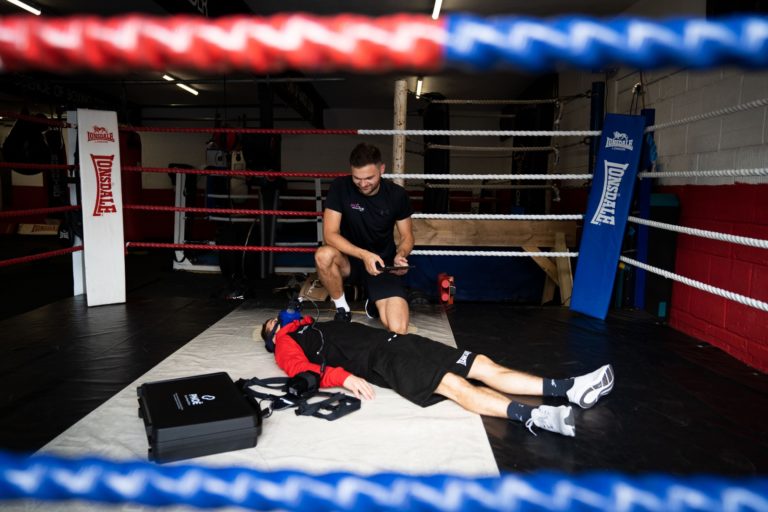
Don’t Forget About Fuel Usage!
Another really cool part of conducting RMR testing is I can have a look at a fighter’s fuel usage at rest or as I like to frame it – the efficiency of their engine. This is called RER (respiratory exchange ratio) & essentially shows what % of carbohydrates & fats are being used to produce energy at rest.
If a fighter is using a large % of carbohydrates to create energy at rest (which is usually a consequence of training high intensity 24/7) this means that they are burning through their limited carbohydrate stores. Subsequently, this can lead to them slowly emptying the gas tank before they have got into the ring or cage – think of it as though they have a hole in their petrol cap & some petrol is slowly leaking out.
Whilst on the flip side if a fighter is using a large % of fats to create energy at rest then this means they are saving their carbohydrate stores for when they matter most meaning they could potentially be more fuelled than their opponent when they step into the ring. And as we know, 1% advantages can be the difference between winning or losing.

This is a snapshot from one of my fighter’s RMR data. We can see that at rest they are predominantly using a large % of fat as fuel & very little carbohydrates which means the efficiency of their engine is good!
It is worth nothing that fuel usage (RER) can be improved via structured training & nutrition strategies, however as with anything in life, you can’t improve if you don’t know where you are currently pulling up short!
I hope you have enjoyed reading this blog about RMR testing, if you want to take your performances to the next level & eliminate all the guess work by getting some testing done then get in contact with me!
Thanks for reading!
Jack


